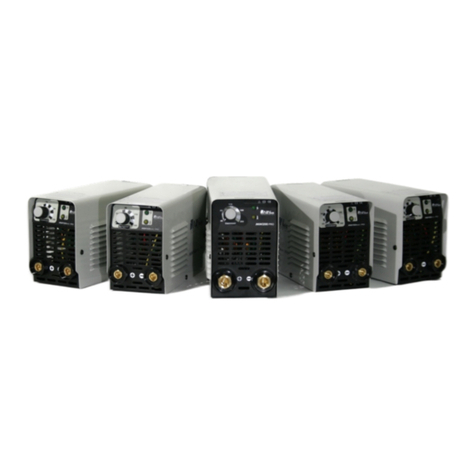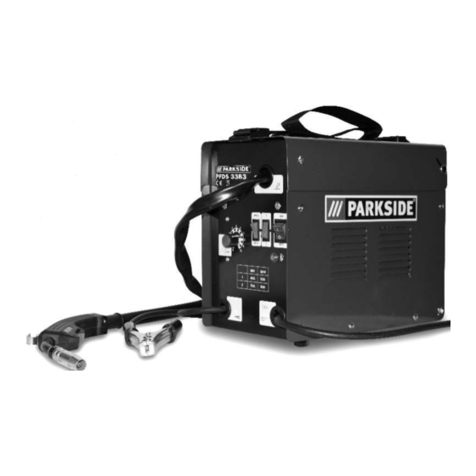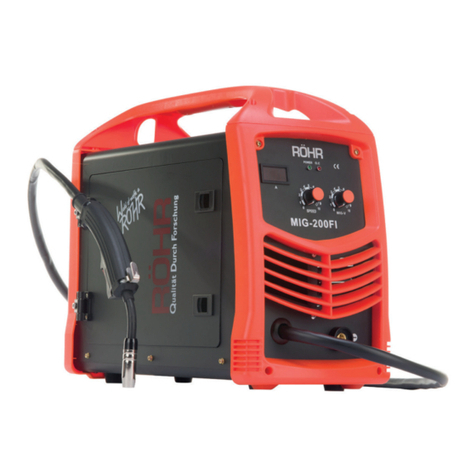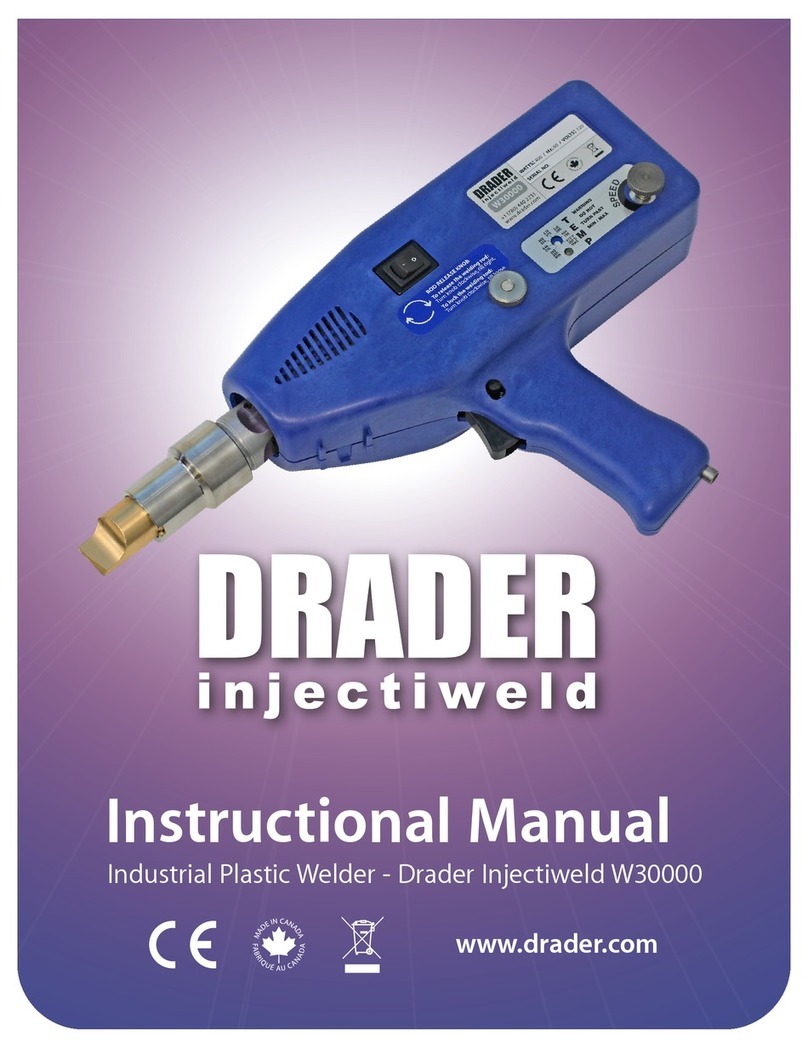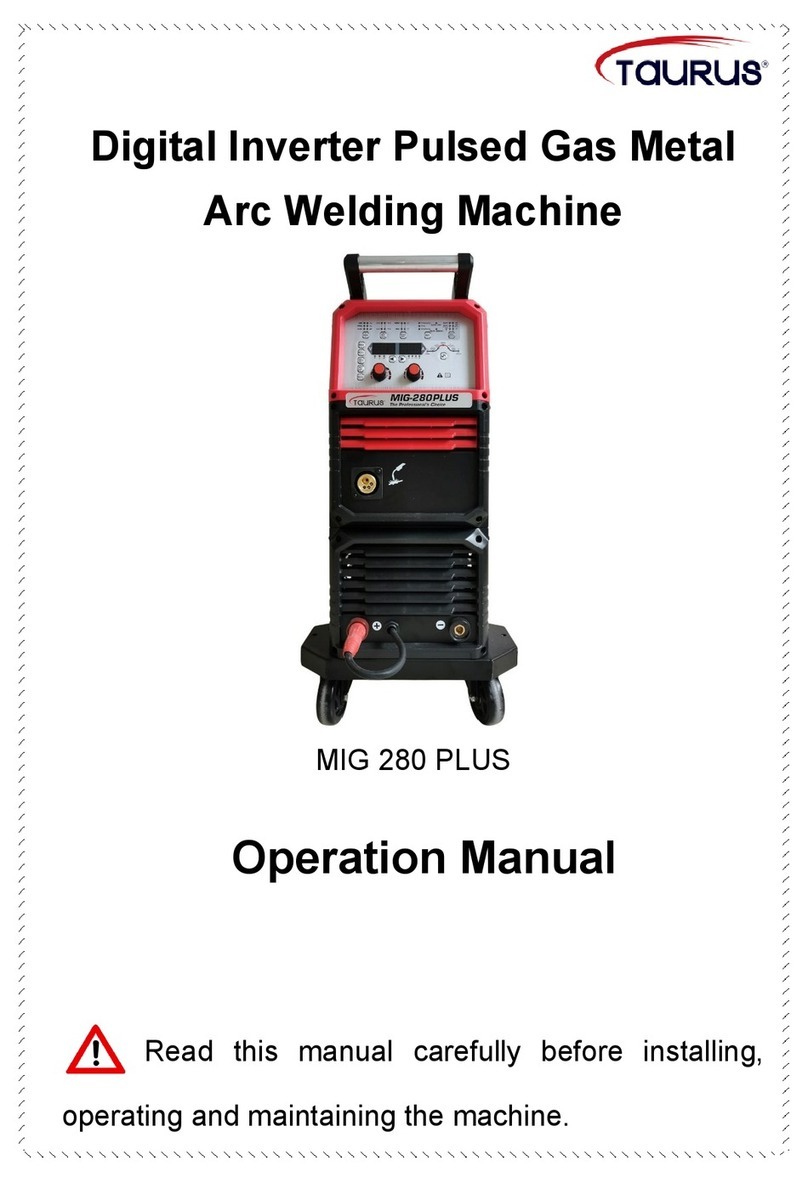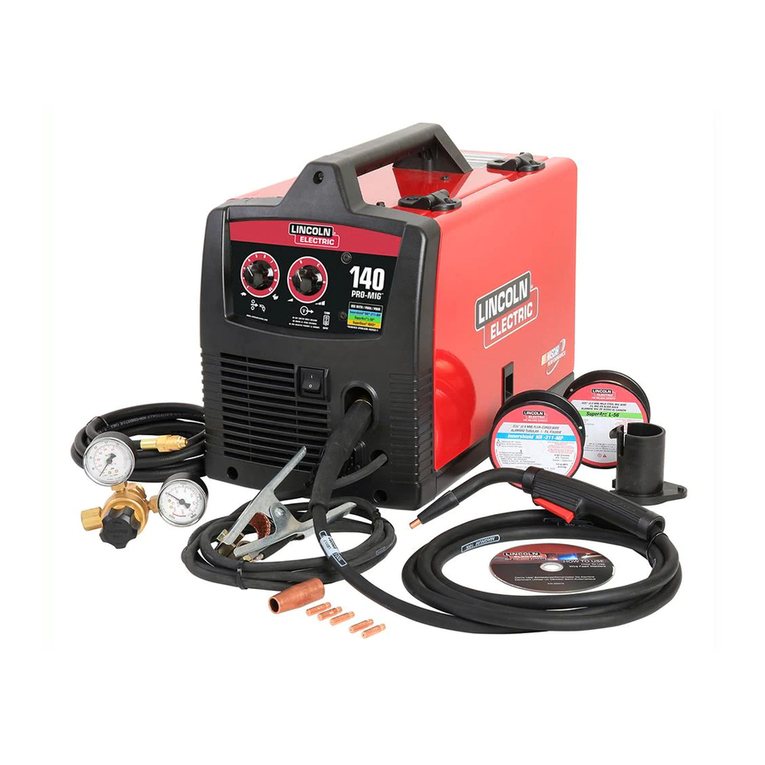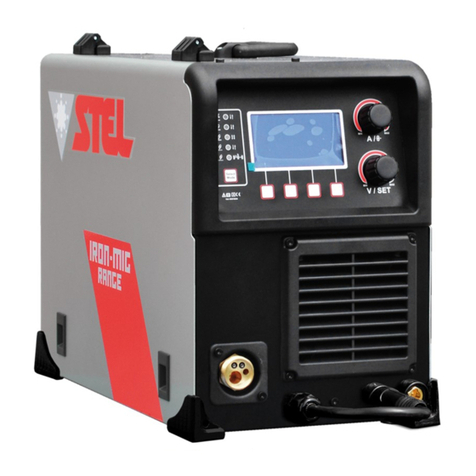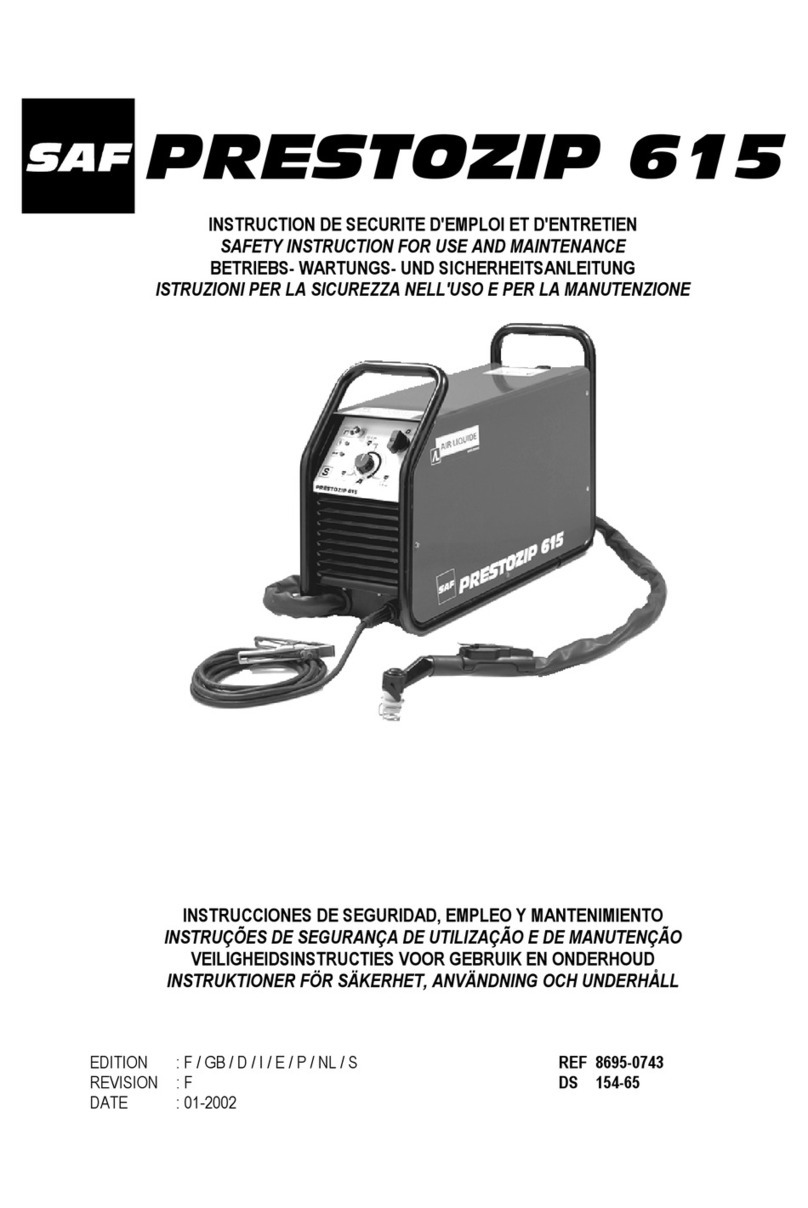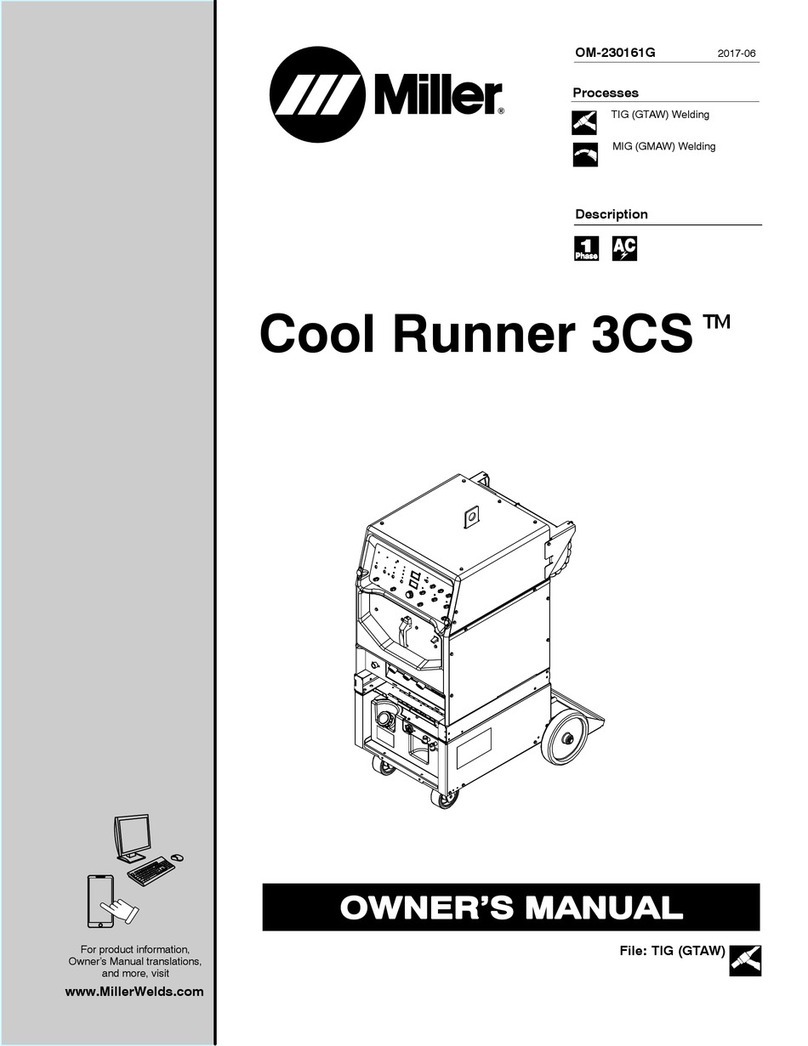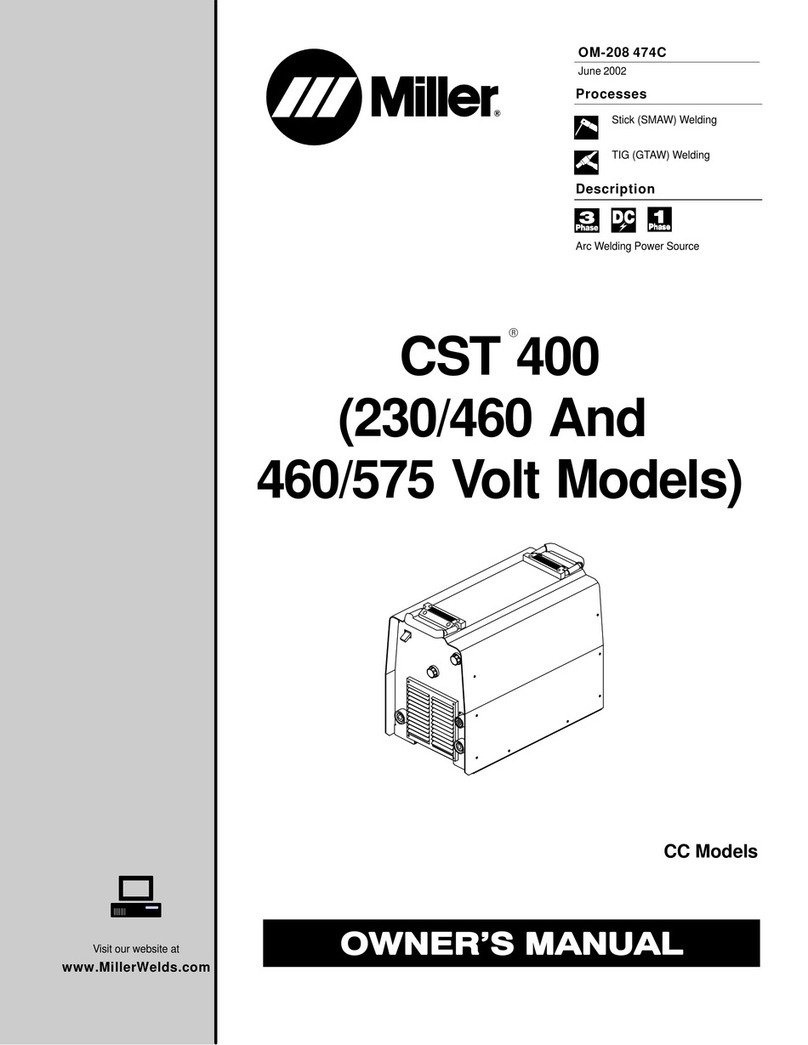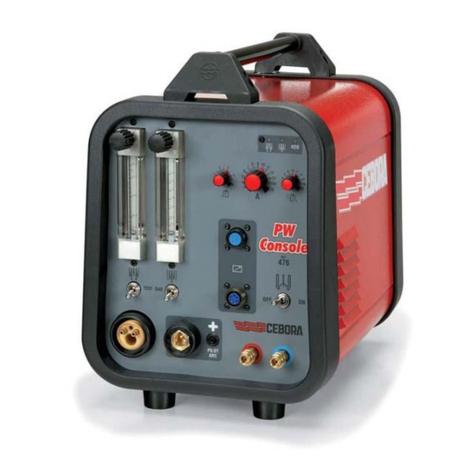Bonnel Technologie WELDMAN User manual

ORTHODONTIC
SPOT WELDER
WELDMAN
User Guide

2

3
No warranty
Both the manufacturer and the distributors shall not be liable, neither express
nor implied, as to the range of application possibilities of our spot welding
appliance WELDMAN.
We assume no liability for damages resulting directly or indirectly, from the
delivery, use and working results of WELDMAN in connection with a random
choice of materials. In each individual case, the materials and their joining
qualities are to be tested in trial welding, and checked by an expert.
Both the manufacturer and the distributors are liable for damages only within
the framework of legal requirements.
Safety Instructions –please read carefully!
The general safety instructions as quoted here are to be followed during use,
maintenance or repair of this spot welding device. Any disregard of the
instructions or warnings printed in this brochure represents a breach of safety
standards as regards the range of applications for which the welder is designed.
The manufacturer and distributors will assume no liability for any resulting
damage arising from the disregard of these instructions and warnings.
The Welding Unit must have earthing equipment!
This spot welder belongs to Safety Class 1 (provided with protective grounding).
In order to minimize the danger of electric shock, the casing should be
grounded and therefore has to always be operated with a three-conductor cable
with earthing conductor and be connected to a socket installed according to
regulations.
If electrostatic charging cannot be excluded (dry air, floor covering, clothing
made from synthetic material etc.), preventive measures have to be applied. For
example, the welder could be placed on a conductive base which is connected
to the grounding plug socket in the front panel of the welder. The operator has
to touch this conductive base before using the device. If not, there is a
possibility that the switched-on welder will become active in case of electro-
static discharge between the operator and the welder, which however is not in
itself harmful.
If the welder is switched on while both electrodes are in contact with each other,
a short circuit is likely to result. The fuse will react correspondingly. In case of a
supposed fault in the welder it is necessary to check the fuse.
Do not open Casing!
All maintenance and repair to be done by trained service personnel only.
Operator must wear protective goggles!

4
Orthodontic Spot Welder WELDMAN
The WELDMAN spot welder is a compact and powerful unit, combining a newly
designed electronic control system with precise mechanics.
Through the electronic control system, the welding force is infinitely variable and
guarantees an excellent performance.
The operation is made easy through a few switches and buttons, arranged in a
logical design and easily accessible position. The pneumatic switch for remote
control is part of the unit.
The delivery also comprises a handset for the soft-annealing of wires.
Technical Data
Size Height 170 mm (6.7 in.), Width 105 mm (4.15 in.),
Depth 290 mm (11.4 in.)
Weight 4,3 kg (9.5 lb.)
Voltage 230 V 50 Hz (115 V 50/60Hz option)
Max. Impulse power ca. 2200 VA
Fuse 3,15 A, miniature, time-lag
Welding:
Max. Impulse current app. 800 A
No load running voltage app. 2,7 V
Ambient temperature +15 °C ÷ +30 °C
Humidity up to 95 % (not condensing)
For use only inside workshops
Please check the voltage before connecting to mains!
Equipment and scope of delivery
Air bellows for pneumatic remote control
One extra pair of welding electrodes
File
Main connection cable
Handset for soft-annealing
Service and maintenance
The set operates generally without maintenance. The welding electrodes have
to be cleaned and filed regularly
Disposal of Waste Equipment by Users in Private Household in
the European Union
This symbol on the product or on its packaging indicates that this product must
not be disposed of with your other household waste. Instead, it is your
responsibility to dispose of your waste equipment by handing it over to a
designated collection point for the recycling of waste electrical and electronic equipment. The
separate collection and recycling of your waste equipment at the time of disposal will help to
conserve natural resources and ensure that it is recycled in a manner that protects human
health and the environment. For more information about where you

5
Control Elements
1 Power
Mains switch for turning welding unit on and off. When turned on, the
switch shows green light.
2 Operating Range
The range button regulates the duration of the welding impulse.
Position 1: results in a short, position 2 in a longer impulse.
Position 2: is mainly used for brackets and the welding of thin wires.
3 Energy used
The energy button regulates the current intensity, which is infinitely
variable
Front
Back

6
4 Impulse
Spot Welding:
Switch is in middle position. Produce welding impulse by pressing the
button
down or by generating the pressure bellows.
The Intensity of impulse is regulated by the elements RANGE (2) and
ENERGY (3).
The duration of the generation of the pressure bellows is of no special
importance.
Soft annealing:
Impulse button must be in the upper position. Current is supplied as
long as the bellows remain pressed. The current intensity is infinitely
variable and can be selected by pressing the button ENERGY (3).
RANGE (2) is inoperable.
5 PRESSURE
The pressure between the electrodes is controlled by the regulating
screw.
6 HANDSET - sockets for the handset
Attention: When working with the handset, the welding electrodes
must not touch each other. Please use slide.
7 Slide
By using the slide in the lower operation arm, the operation arms can
be fixed after having been pressed down so that the electrodes can no
longer touch each other.
8 Mains Connection
The mains connection socket and the fuse are at the rear of the set.
The socket holds a spare fuse.
9 Pressure bellows
The tube of the bellows is connected to the rear of the set.
The bellows can be operated by hand, knee, elbow or foot.
10 Fuse
The fuse compartment can easily be opened with a screwdriver.
11 Serial number
In case of inquiries, please state serial number of the unit.

7
General Information
Welding
The parts to be welded are heated by the current impulse which melts
the material.
The pressure of the electrodes welds the molten material durably
together.
The amount of heat energy produced in the metal is influenced in
proportion to the following criteria:
- material
- contact area
- contact pressure
- surface (oxidation layers, grease)
- shape of electrodes
- intensity of current
The last two parameters can be determined by selection.
Soft annealing
By using the handset, wire can be heated through the current flow of certain
duration so that its molecular structure is changed.
Attention: When sending the welding unit, please use original packing
© Copyright BONNEL TECHNOLOGIE s.r.o.
This documentation contains copyrighted information. All rights reserved,
especially the right of duplication and distribution as well as the right of
translation. No part of the documentation may be reproduced by any method
whatsoever without prior written consent.
Right of changes of the information contained in this documentation reserved.

8
Recommended Settings for Welding
1 Brackets, tubes and auxiliary part to bands
RANGE 1
ENERGY 3 to 7
2 Stainless steel wire from 0.010“ to 0.020“
RANGE 1
ENERGY 2 to 7
3 Stainless steel wire from 0.022“ to 0.045“
RANGE 2
ENERGY 4 to 7
4 TMA –wires from 0.016“ to 0.022“
RANGE 1
ENERGY 5 to 7
5 TMA –wires from 0.032“ to 0.036“
RANGE 2
ENERGY 6 to 7
The recommended settings are approximate values. Precise welds depend on
the thickness of materials and the pressure of the electrodes.

9
Recommended position of welding electrodes

10

11

12
version 02.2016
Table of contents
